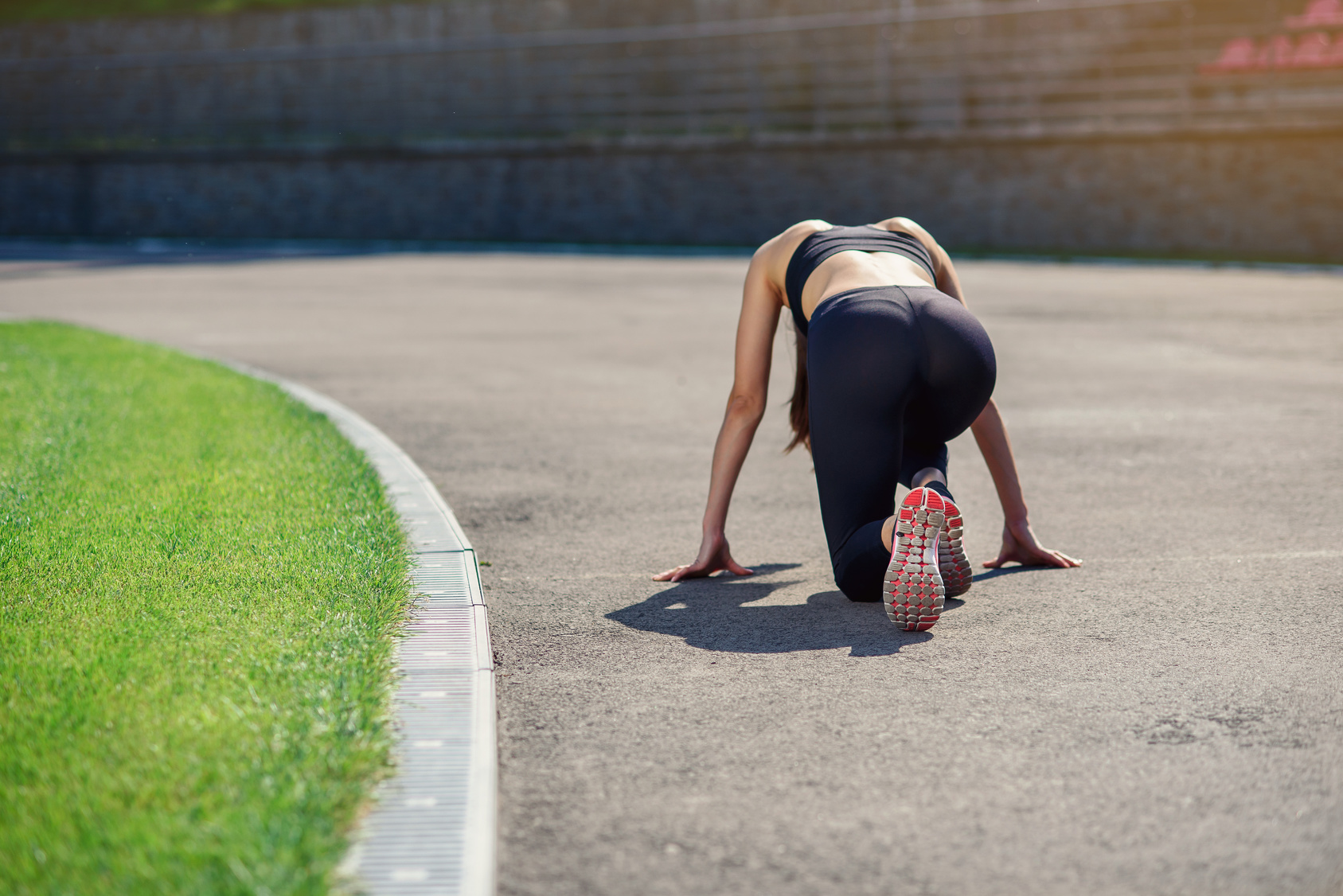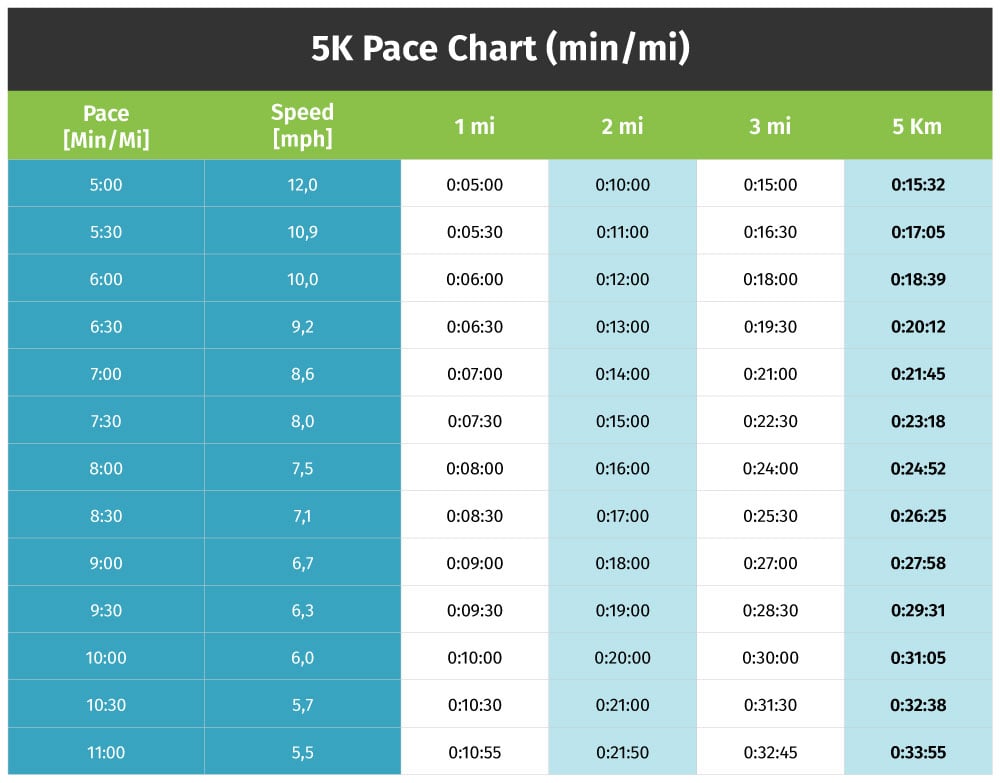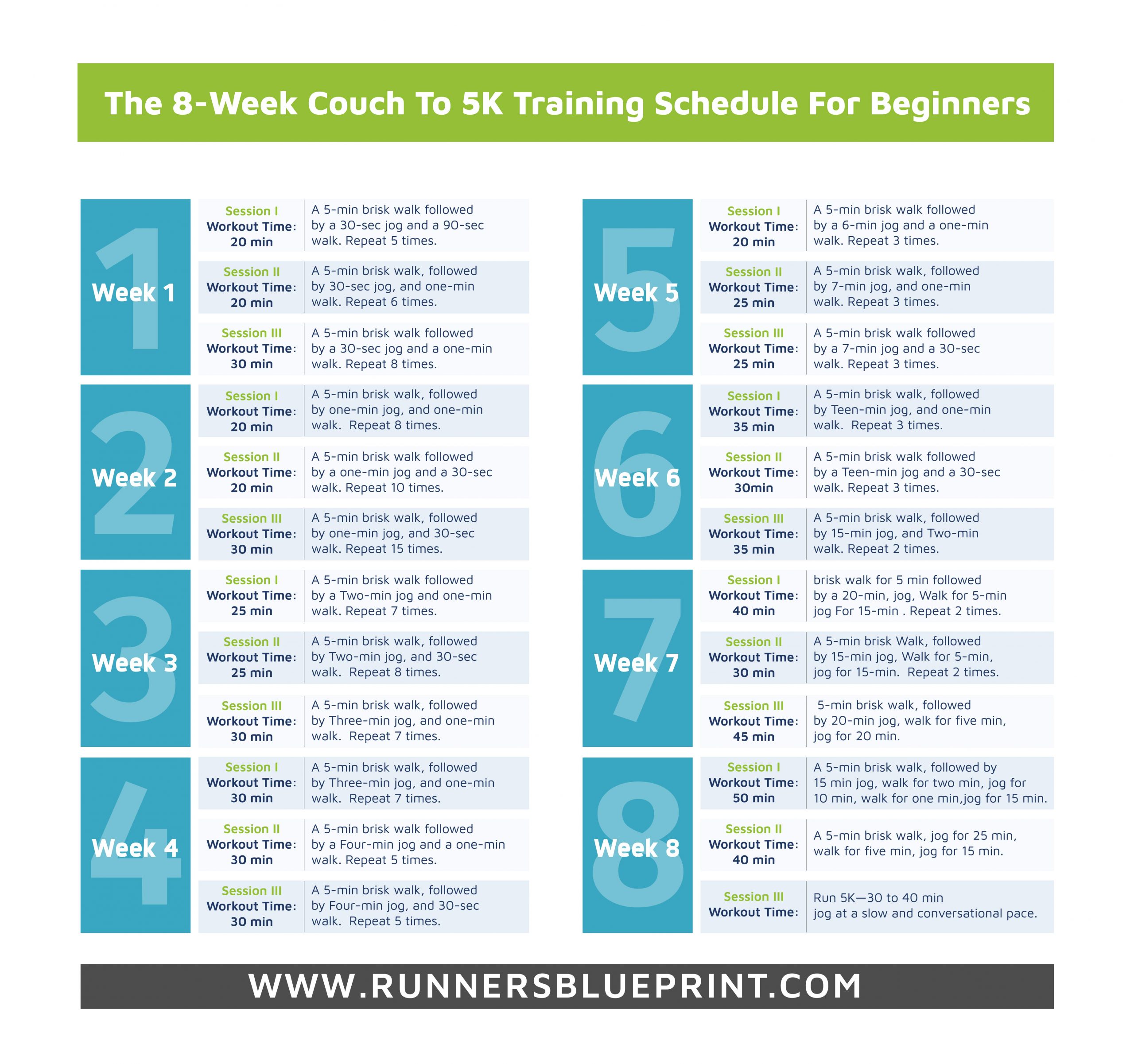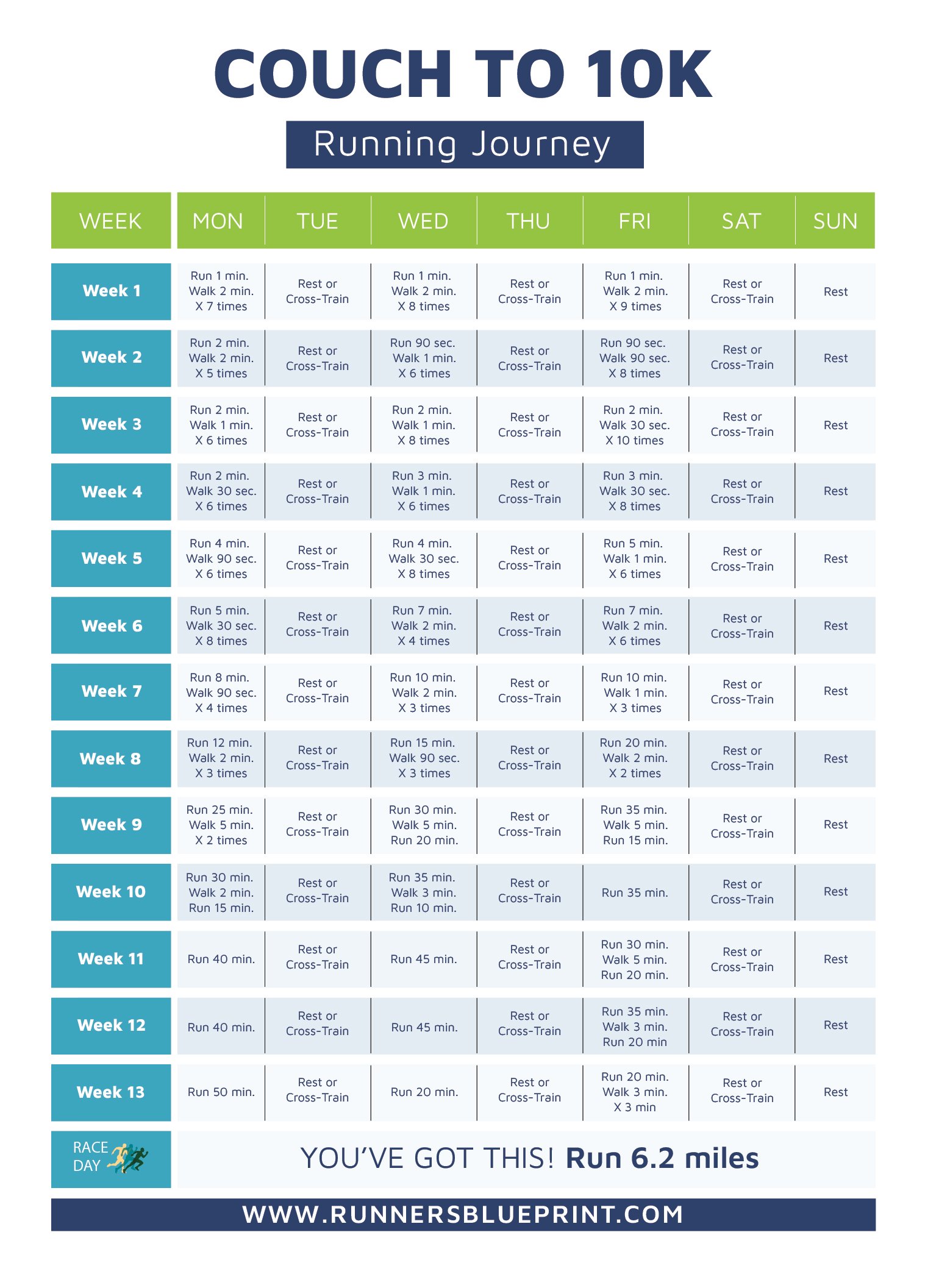Getting into running can be challenging,, especially if you’re out of shape. But fear not! The Couch to 5K plan is the perfect thing you need to get started on the running path. It’s like a gateway drug to a healthier lifestyle.
Sure, there are thousands of C25K plans available online, but who has the time to sort through all that information?
In this article, I’ll cover all the basics, from what exactly the Couch to 5K program entails to how long it takes to complete and whether or not it actually works (spoiler alert: it does!). I’l even share the secret to its success.
That’s not the whole story. I’ll also show you how to improve your fitness and even answer the age-old question: “Will I lose weight with the Couch to 5K plan?”
I’ll also dive into the many benefits of the program, provide you with a C25K schedule, and answer common questions like, “Can I do the Couch to 5K on a treadmill?”
Lace up your shoes, and let’s dive into the world of Couch to 5K.
Note – In case the C25K plan seems too easy for you, check out my more challenging Couch to 10K plan.
What’s The Couch to 5K Program?
Have you heard of the Couch to 5K plan?
It’s the magical program that can take you from sofa slob to 5K superstar in just a few months! Yes, you read that right, just a few months!
The couch to 5K program, also known as C25K or Sofa to 5K, has helped countless people go from non-runners to crossing the finish line of their first 5K.
What is the goal of the couch to 5K plan? To guide you toward running 3.1 miles on the road, track, trail, or even on a treadmill. Imagine your body as a house and the Couch to 5K plan as the foundation. Think of the couch to 5K plan as building a strong foundation is essential for a stable house, a solid cardio base is essential for a strong and healthy body
The Origins
Back in the 1990s, Josh Clark created the original Couch to 5K plan for his 50-something mom. He then shared it on a blog called Cool Running, and it spread like wildfire around the internet. Sadly, the blog is no longer active (it was acquired by Active.com for an undisclosed amount), but the program lives on!
Over the past 25 years, countless running blogs have copied and tinkered with the original plan, creating eight and 16-week versions and more. Want to see a 9-week version? Check out the one I’ve included in this article.
But wait, there’s more! In 2016, the Couch to 5K plan was adapted into a free app known as C25K, becoming one of the most popular fitness apps out there.
That’s not the whole story. The couch to 5K plan has also been adapted by the National Health Service in the UK as part of their plan to curb the rising rates of obesity and improve overall health.
Here are more versions
How Long Does it Take to Finish the Couch to 5K Plan?
Wondering how long does it take to Finish the Couch to 5K plan? I hate to break it to you but varies since it depends on your starting point and endurance level.
The initial C25K plan and the NHS Couch to 5K programs take around nine weeks to finish. But if you’re like me, and your idea of cardio is running when late for work, it might take you a bit longer. Don’t worry, though. It’s not a race, and nobody’s handing out medals for the fastest time.
My plan has eight weeks, but feel free to adjust it according to your own needs and preferences. Just don’t go too easy on yourself, or you’ll be sipping margaritas on the Couch instead of running a 5K.
Remember, progress at your own pace. If you feel like you have to repeat a week or two, that’s okay. You’re still lapping everyone on the Couch. And really, isn’t that what matters the most? The rest is just gravy. Delicious, calorie-laden gravy.
 Does The Couch To 5K plan actually work?
Does The Couch To 5K plan actually work?
Are you curious to know if the Couch to 5K plan really works? Well, let me tell you, it definitely does! It’s like magic, but with sneakers.
Millions of beginners have completed the sofa to 5K program, and you can too! It’s the perfect plan to turn your running dreams into reality, even if you’re a total newbie.
My girlfriend was always averse to exercise and would often joke that the only running she did was to catch the bus. But after trying the Couch to 5K plan the way I’m laying it out in today’s, she became hooked on running and now goes for regular jogs on the beach.
That’s when I felt the need for the Couch to 5K plan. Even though I was an experienced runner, the plan helped me ease back into running and rebuild my stamina..
The Benefits of Couch to 5K Plan
The C25K plan takes all the guesswork out of the equation. You don’t have to be a running guru to figure out what to do next because the plan spells it out for you. All you need to do is follow the instructions, and voila! You’re on your way to becoming a runner.
What’s more?
One of the great things about the Couch to 5K plan is that it’s flexible and can be adapted to your individual needs. For example, if you have bad knees or prefer low-impact exercise, you can modify the workouts to include more walking and less running.
On the typical couch to 5K plan, you’ll be training three times per week, around 30 to 40 minutes each session. But feel free to take an extra day off if you’re feeling tired or overtrained.
In the first week, you’ll do a series of short, one-minute jogs separated by 90 seconds of walking breaks. It’s easy peasy, lemon squeezy. Then, in the second week, you’ll tack on an extra 30 seconds to each jogging interval while adding full minutes of walking breaks in between. See? It’s not so scary after all!
The program builds up gradually as you become stronger and more capable, so you’ll always feel like the next target is within reach. By the end of the nine-week plan, you’ll be running for a full 30 minutes without breaking a sweat.
Okay, maybe a little bit of sweat, but you get the point.
This structured training approach is perfect for beginners because it gives you enough time to catch your breath and adjust to the demands of running. So, if you’re ready to ditch the Couch and hit the road, the Couch to 5K plan is the way to go. Let’s do this!
I’ve Never Ran Before. Will I be able to improve?
The C25K plan is perfect for folks like you who want to start running but have no idea where to begin.
Now, listen up because this is important: take it slow. I’m talking turtle-paced. Don’t push yourself too hard, or you might end up with an injury that’ll have you cursing the day you ever thought about running.
What’s more?
When it comes to injuries, consult before starting on a new fitness plan, especially if you have any medical conditions. I want you to stay safe and healthy while you’re chasing those running goals!
Will I Lose Weight With The Couch to 5K Schedule?
Yes, running can definitely help you shed those extra pounds, but it’s not a magic pill.
Sorry to burst your bubble, but there’s no shortcut to fitness!
The truth is that forming a running habit doesn’t automatically make you lose weight. There are other variables that go into it, such as your nutrition, sleep, hormones, microbiome, stress levels, etc.
So if you run for 60 minutes, then get home, and stuff your mouth with junk food because you feel stressed at work and aren’t sleeping well, you’re not going to shed many pounds.
How Far is A 5K In Miles
How far is a 5K in miles? Well, I’m glad you asked. It’s 3.1 miles, my friend.
That’s like running the length of 45 football fields, or 45 laps around a baseball diamond, or the length of an NBA basketball court over 174 times.
Whew, that’s a lot of running!
The Average 5K Pace
And just in case you’re curious, the average 5K pace is around 11 minutes per mile for men and 13 minutes per mile for women. But hey, don’t compare yourself to others..
Check the chart below for more:
Get the full scope here.
Can I do The Couch to 5K Program on A Treadmill?
If you’re wondering whether you can follow the C25K program on a treadmill, fear not! It’s like having a trusty sidekick to guide you on your running journey.
In fact, running on a treadmill can be a great way to ease into the program without the added stress of outdoor elements.
I’ve put together a full Couch to 5K treadmill guide here, explaining how to make the most out of the indoor running as a beginner.
Where To Find Couch To 5K Groups Near Me?
I’d recommend googling “couch to 5K groups near me” and checking Facebook or your local Council pages. You’ll find one, as there are lots of C25K groups out there.
How To Train For your First 5K
Are you ready to lace up those running shoes and hit the pavement? T
raining for your first 5K can be an exciting and intimidating experience, but fear not! With the right strategies in place, you’ll be crossing that finish line in no time.
Warm-up & Cool Down
Think of your body as a high-performance race car – you wouldn’t take it on the track without first warming it up, right? The same goes for your body before a run. A proper warm-up gets your engine revving, increases blood flow, and lowers the risk of injury.
So, what’s the ideal warm-up sequence?
Jog slowly for at least five minutes, then perform a set of dynamic stretches. Avoid static stretching before exercise, as research has shown that it may hinder performance and cause injury.
For a full guide to proper warm-ups, check my article here. Or check the following YouTube tutorial.
But don’t forget the cool-down! Take some time to walk or jog at a slower pace, taking deep breaths to regulate your heart rate.
Stretching is also a crucial part of any runner’s routine. Think of it like maintaining your car – you want to keep everything running smoothly and avoid any breakdowns. Focus on stretching out those key running muscles, like the glutes, hamstrings, quadriceps, and calves.
Here are three of my favorite post-run stretching routines.
Listen to Your Body
Running a 5K is no easy feat, and I won’t blame you if you want to give it your best to achieve your goals. But if you do too much too soon, you might end up doing more harm than good.
So what’s my best advice?
Simple. Ditch the the “no pain, no gain” mentality and start paying attention to what your body is telling you. If you feel any weakness, sharp pain, or lightheadedness while running, it’s a warning sign that you need to slow down.
I hate to sound like a broken record but think of your body like a car – you wouldn’t drive it at full speed all the time without regular maintenance and checkups, right? Your body needs the same care and attention. Pushing through nagging discomfort might seem like the tough thing to do, but it’s not worth it if you end up with a serious injury.
Instead, take a step back and reassess. Maybe you need to adjust your training plan or incorporate more rest days.
Additional resource – How to promote a 5K
Eat Well
Food is fuel. Accordingly, the main objective of eating should be to fuel you up, not to fill you up.
I keep saying this because it’s so true.
We are, after all, what we eat.
What you eat can either make you a faster runner or slow you down like nothing else, so pay attention to what you are putting into your mouth.
Check out the following post on how to maximize your nutrition.
- The beginners guide to runners diet.
- The Guide to Pre- and Post-eating For Runners
- The 9 Diet Mistakes Runners Make
- The 10 Vitamins & Minerals Every Runner Needs
Don’t Neglect Recovery
Recovering after training is like taking a sweet nap after a long day’s work. Just like you wouldn’t skip out on some much-needed rest after a long day, don’t skimp on recovery after a tough workout.
Trust me; your body will thank you for it.
It’s like the old saying goes, “Too much of a good thing can be a bad thing.” And that’s so true when it comes to running. Overtraining is like trying to fit a whole cake in your mouth at once. Sure, it might seem like a good idea at first, but you’ll quickly regret it when you’re left with a mouthful of crumbs and a bellyache.
And if you do start feeling some discomfort, don’t be a hero. It’s like trying to push a square peg into a round hole – it’s just not going to work out. Take a step back, reassess, and adjust accordingly. After all, Rome wasn’t built in a day, and neither will your perfect race time.
Build Strength
Listen up, fellow runners! If you want to achieve a racing experience that goes beyond just finishing the race, then you need to start building a strong foundation. And no, we’re not talking about a house here.
I’m talking about building total-body strength that will support you as you run mile after mile. It’s like having a team of little helpers holding you up and saying, “You got this, buddy!” Even when fatigue tries to take over.
So, let’s get to work! You need to be hitting those total-body strength workouts at least a couple of times a week.
And guess what? Building strength doesn’t only improve your running form and efficiency, but it can also help you run faster and farther with less fatigue.
The Couch To 5K Plan In 8 Weeks
During the first couple of weeks, you’ll jog for 15 to 30 seconds, then walk for a minute or two. It’s like playing a game of red light, green light, but with your legs.
As you progress through the program, you’ll be jogging more and walking less, building up your endurance and stamina until you can run for over three miles without stopping.
And don’t worry about fitting it into your schedule. You only need to commit to three days a week. That’s like giving your body a well-deserved break on the other days.
Sofa to 5K – The Conclusion
Congratulations! You now have all the tools necessary to conquer your first 5K in just two months or less with our Sofa to 5K plan.
Remember, the key to success is consistency and dedication.
Follow the plan, trust the process, and don’t give up.
Your body and mind will thank you for it. If you have any questions or want to share your progress, drop a comment below.
I’m rooting for you!
Keep pushing yourself and remember, the greatest achievements often come from taking that first step. Happy running!.



















